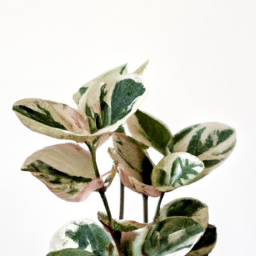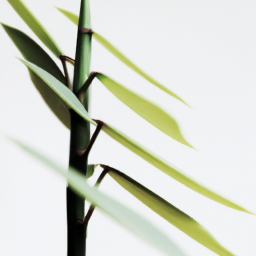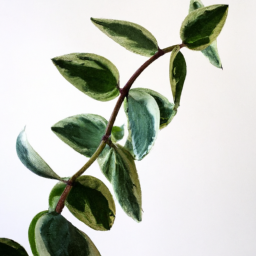
Are you looking to bring some greenery into your home but worried about the lack of natural light? Fear not, because there are plenty of indoor plants that thrive in minimal light conditions. In this blog post, we’ll explore the world of indoor plants that can brighten up any space, even without a lot of sunlight. Whether you have a dark corner that needs some life or simply want to add some greenery to your home office, these low-light loving plants are sure to impress. So, let’s dive in and discover the best indoor plants for minimal light environments.
Best Indoor Plants for Low Light Environments
Introduction
When it comes to indoor plants, finding the right ones for low light environments can be a bit challenging. However, with the right knowledge and guidance, you can easily transform your dimly lit space into a green oasis. In this guide, we will explore some of the best indoor plants that thrive in minimal light conditions, providing you with a list of options to choose from for your home or office.
Peace Lily
The Peace Lily is a popular choice for low light environments due to its ability to thrive in shady conditions. This plant features dark green leaves and elegant white flowers, making it a beautiful addition to any space. Peace Lilies are also known for their air-purifying properties, making them a great choice for improving indoor air quality. To care for a Peace Lily, make sure to keep the soil consistently moist but not waterlogged, and avoid placing it in direct sunlight.
Another great option for low light environments is the Spider Plant. This easy-to-care-for plant features long, arching leaves with white stripes, giving it a unique and attractive appearance. Spider Plants are known for their air-purifying abilities, making them a great choice for improving indoor air quality. To care for a Spider Plant, make sure to water it regularly and avoid placing it in direct sunlight.
The Snake Plant, also known as Mother-in-Law’s Tongue, is a hardy plant that thrives in low light environments. This plant features tall, upright leaves with a striking green and yellow color pattern, making it a visually appealing addition to any space. Snake Plants are known for their air-purifying properties, making them a great choice for improving indoor air quality. To care for a Snake Plant, make sure to water it sparingly and avoid placing it in direct sunlight.
In conclusion, there are plenty of indoor plants that can thrive in low light environments, providing you with a variety of options to choose from. Whether you prefer the elegant white flowers of the Peace Lily, the unique appearance of the Spider Plant, or the striking color pattern of the Snake Plant, there is a plant out there that will suit your taste and thrive in your dimly lit space. With the right care and attention, you can enjoy the beauty and benefits of indoor plants no matter how much natural light is available.

Tips for Caring for Indoor Plants in Minimal Light Conditions
Understanding the Importance of Light for Indoor Plants
When it comes to caring for indoor plants, one of the most important factors to consider is the amount of light they receive. Light is essential for plants to photosynthesize and grow, so it’s crucial to provide them with the right amount of light for optimal health. In minimal light conditions, it can be challenging to ensure that your indoor plants are getting enough light to thrive. However, with the right care and attention, you can still successfully grow a variety of plants in low-light environments.
To understand how light affects indoor plants, it’s important to know that different plants have varying light requirements. Some plants thrive in bright, direct sunlight, while others prefer indirect or minimal light. When choosing plants for a low-light environment, look for species that are known to tolerate or even thrive in such conditions. Examples of indoor plants that do well in minimal light include snake plants, pothos, peace lilies, and ZZ plants.
In minimal light conditions, it’s essential to place your plants in the brightest spot available. While they may not receive as much light as they would in a sunny window, positioning them near a window or under artificial lighting can help provide them with the light they need to survive. Additionally, rotating your plants regularly can help ensure that all parts of the plant receive some light, preventing them from becoming leggy or lopsided.
Another factor to consider when caring for indoor plants in minimal light conditions is the duration of light exposure. While some plants may require longer periods of light to thrive, others can adapt to shorter periods of light exposure. Monitoring your plants’ growth and health can help you determine whether they are getting enough light. If you notice signs of stunted growth, yellowing leaves, or leggy stems, it may be a sign that your plants need more light.
Tips for Caring for Indoor Plants in Minimal Light
When caring for indoor plants in minimal light conditions, there are several tips you can follow to help them thrive. One essential tip is to choose the right plants for your environment. As mentioned earlier, some plants are better suited to low-light conditions than others. By selecting plants that are known to tolerate minimal light, you can increase the chances of success in caring for them.
Another important tip is to provide your plants with the right amount of water. In low-light environments, plants may not require as much water as they would in brighter conditions. Overwatering can lead to root rot and other issues, so it’s crucial to monitor the moisture levels in the soil and adjust your watering schedule accordingly. Allow the top inch of soil to dry out before watering your plants to prevent waterlogged roots.
In addition to proper watering, it’s essential to fertilize your indoor plants regularly. In minimal light conditions, plants may not receive as many nutrients from the soil as they would in brighter environments. Using a balanced, water-soluble fertilizer can help provide your plants with the essential nutrients they need to thrive. Be sure to follow the instructions on the fertilizer package and avoid over-fertilizing, as this can harm your plants.
Lastly, maintaining good air circulation around your indoor plants can help prevent issues such as mold, mildew, and pests. In low-light environments, stagnant air can promote the growth of harmful organisms that can damage your plants. To improve air circulation, consider using a fan or opening windows periodically to allow fresh air to circulate around your plants. This can help keep your plants healthy and thriving in minimal light conditions.
Common Issues and Troubleshooting Tips
Despite your best efforts, you may encounter issues when caring for indoor plants in minimal light conditions. Common problems include yellowing leaves, leggy growth, and pest infestations. If you notice any of these issues, there are several troubleshooting tips you can follow to address them.
Yellowing leaves are often a sign of overwatering or nutrient deficiencies. To address this issue, adjust your watering schedule and consider fertilizing your plants with a balanced fertilizer. Trim off any yellowed or damaged leaves to promote new growth and improve the overall health of your plants.
Leggy growth is another common issue that can occur in low-light environments. To prevent leggy growth, rotate your plants regularly to ensure that all parts of the plant receive some light. You can also prune your plants to encourage bushier, more compact growth. Removing leggy stems can help your plants maintain a more attractive appearance and prevent them from becoming lopsided.
Pest infestations can also be a problem when caring for indoor plants in minimal light conditions. Common pests such as spider mites, mealybugs, and aphids can damage your plants if left untreated. To address pest infestations, inspect your plants regularly for signs of pests and treat them with insecticidal soap or neem oil. Isolating infested plants can help prevent pests from spreading to other plants in your collection.
By following these tips and troubleshooting strategies, you can successfully care for indoor plants in minimal light conditions. With the right care and attention, you can create a thriving indoor garden that brings beauty and greenery to your home, even in low-light environments.

Creative Ways to Brighten up Your Home with Indoor Plants in Low Light Settings
Are you looking to add some greenery to your home but don’t have a lot of natural light? Don’t worry, there are plenty of indoor plants that thrive in low light settings. In this guide, we will explore some creative ways to brighten up your home with indoor plants even in minimal light conditions.
Choosing the Right Plants
When it comes to selecting indoor plants for low light settings, it’s important to choose varieties that can thrive in such conditions. Some plants are naturally more tolerant of low light levels, making them perfect for brightening up dimly lit spaces. Examples of plants that do well in minimal light include:
1. Snake Plant: Also known as mother-in-law’s tongue, this plant is incredibly resilient and can survive in low light conditions. It has striking vertical leaves that add a touch of elegance to any room.
2. Pothos: Pothos plants are known for their trailing vines and heart-shaped leaves. They can thrive in low light and are great for adding a pop of green to shelves or hanging baskets.
3. Peace Lily: Peace lilies are not only beautiful with their white flowers, but they also thrive in low light. They are great for adding a touch of elegance to any room.
Caring for Your Indoor Plants
Once you have selected the right plants for your low light space, it’s important to properly care for them to ensure they thrive. Here are some tips for caring for indoor plants in minimal light settings:
1. Watering: While plants in low light settings may not need as much water as those in brighter conditions, it’s still important to water them regularly. Make sure the soil is slightly damp but not waterlogged.
2. Pruning: Regularly prune your plants to remove any dead or yellowing leaves. This will help promote new growth and keep your plants looking healthy and vibrant.
3. Fertilizing: Consider fertilizing your plants every few months to provide them with the nutrients they need to thrive. Choose a balanced, water-soluble fertilizer and follow the instructions on the packaging.
Enhancing Your Space with Indoor Plants
Indoor plants not only brighten up a space but also have numerous health benefits, such as improving air quality and reducing stress. Here are some creative ways to enhance your home with indoor plants in low light settings:
1. Create a Plant Wall: If you have limited floor space, consider creating a plant wall using hanging planters or wall-mounted shelves. This will add a touch of greenery to your space without taking up valuable floor space.
2. Mix and Match: Get creative with your plant selection by mixing different varieties and sizes. Grouping plants together can create a visually appealing display and add interest to your space.
3. Use Decorative Pots: Elevate the look of your indoor plants by choosing decorative pots or planters. Opt for pots in different shapes, sizes, and colors to add a touch of personality to your space.
By following these tips, you can brighten up your home with indoor plants even in low light settings. Get creative with your plant selection and care routine to create a lush and vibrant indoor oasis.
Key Takeaways
If you’re struggling to keep indoor plants alive because your space lacks natural light, fear not! There are plenty of plant options that thrive in low light conditions. While most plants do require some amount of light to photosynthesize and grow, there are some hardy varieties that can survive on minimal light.
Some great options for low light conditions include snake plants, pothos, and peace lilies. These plants are not only easy to care for but can also help purify the air in your home. Just be sure to water them sparingly and avoid placing them in direct sunlight, as they can easily become scorched. With a little bit of research and care, you can enjoy the beauty and benefits of indoor plants even in spaces with minimal natural light.
Curious Minds Asked, We Responded. Frequently Asked Questions:
Q1. Can indoor plants survive in minimal light conditions?
A1. Yes, there are several types of indoor plants that can thrive in low light environments. These plants have adapted to survive with minimal sunlight.
Q2. What are some indoor plants that require minimal light?
A2. Some popular indoor plants that can thrive in low light conditions include snake plants, pothos, peace lilies, and ZZ plants. These plants are known for their ability to thrive in dimly lit areas.
Q3. How often should I water indoor plants in low light conditions?
A3. It’s important to not overwater indoor plants in low light conditions, as they may not be able to dry out as quickly. Check the soil moisture before watering and aim to water sparingly, allowing the soil to partially dry out between waterings.
Q4. Do indoor plants in minimal light conditions need fertilizer?
A4. Indoor plants in low light conditions may not require as much fertilizer as plants in brighter environments. It’s best to use a diluted, balanced fertilizer every few months during the growing season to provide essential nutrients.
Q5. How can I improve the growth of indoor plants in minimal light?
A5. To improve the growth of indoor plants in minimal light, you can rotate them occasionally to ensure all sides receive some light. You can also consider using artificial grow lights to supplement natural light and promote healthy growth.
Dr. Olivia Green is a botanist with over two decades of experience in indoor plant cultivation. She holds a Ph.D. in Plant Biology and has dedicated her career to researching plant behavior in controlled environments. Dr. Green is passionate about helping plant enthusiasts master the art of indoor gardening through her extensive knowledge and practical insights.


